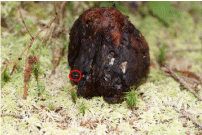
Opinion
J Bacteriol Mycol. 2019; 6(5): 1113.
Early Spring Buildup of an Invasive Insect Fruit Pest, the Potential Role of Fungal Fruiting Bodies
Drummond F*
School of Biology and Ecology, University of Maine, USA
*Corresponding author: Francis Drummond, School of Biology and Ecology, University of Maine, Orono, ME 04469, USA
Received: September 26, 2019; Accepted: October 15, 2019; Published: October 22, 2019
Opinion
The spotted wing drosophila, Drosophila suzukii (Matsumura), is an invasive Dipteran insect pest of soft bush, vine and tree fruit crops in both Europe and North America [1]. In Maine U.S.A., it is a major economic threat to wild blueberries, fall raspberries, and dayneutral strawberries. It is hypothesized to overwinter successfully in this north temperate climate, but at very low population densities [2]. Spotted wing drosophila does not appear in Maine crops until mid to late July [3]. It is a bit of a puzzle as to what host the first several generations of flies utilize to build up on during the spring as soft ripe wild and crop fruits are not generally available until early July.
In the early summer of 2016, we found fleshy fruiting bodies of Basidiomycota and Ascomycota on the forest floor adjacent to the edges of wild blueberry fields. Many of these fruiting bodies were in an advanced state of decay. Upon close examination, I found that spotted wing drosophila were utilizing these fruiting bodies as larval hosts and possibly food hosts for adults. Hundreds of eggs, larvae, pupae, and adults were associated with each decayed fruiting body (Figure 1).

Figure 1: Decaying fungal fruiting body with several adult spotted wing
drosophila feeding. Red ring encircles a male with diagnostic spots on wings.
This discovery changes the current thought on wild resources that spotted wing drosophila utilize in their invaded range enabling them to build up geometrically just prior to fruit crop ripening and attack. Prior to the discovery, only wild fruits were suspected of playing this role [4] and yet most ripen far to late to be of benefit in increasing populations to economically threatening levels to crops in Maine and other regions of northeastern Europe and North America. Crop production regions like Maine consist of temperate hardwood Acadian Forest. This habitat is thought to be rich in macrofungi of the Basidiomycota and Ascomycota , although in general fungal diversity in North America is poorly understood [5].
References
- Asplen MK, Anfora GA, Biondi A, Choi DS, Chu D, Daane KM, Gibert P, Gutierrez AP, Hoelmer KA, Hutchison WD, et al. Invasion biology of spotted wing drosophila (Drosophila suzukii): a global perspective and future priorities. J. Pest Sci. 2015; 88: 469-494.
- Stockton DG, Wallingford A, Rendon D, Fanning P, Green CK, Diepenbrock L, Ballman E, Walton V, Isaacs R, Leach H, Sial AA, Drummond F, Burrack H, Loeb GM. Overwintering success of spotted wing drosophila in North America. Environ. Entomol. 2019.
- Drummond FA, Collins J, Ballman E. Population dynamics of spotted wing drosophila (Drosophila suzukii (Matsumura)) in Maine wild blueberry. Insects. 2019; 10: 205-229.
- Ballman ES, Drummond FA. Infestation of Wild Fruit by Drosophila suzukii Surrounding Maine Wild Blueberry Fields. J. Agric. & Urban Ent. 2017; 33: 61-70.
- Bates ST, Miller AN, & the Macrofungi Collections and Microfungi Collections Consortia. The protochecklist of North American nonlichenized Fungi, Mycol. 2018; 110: 1222-1348.